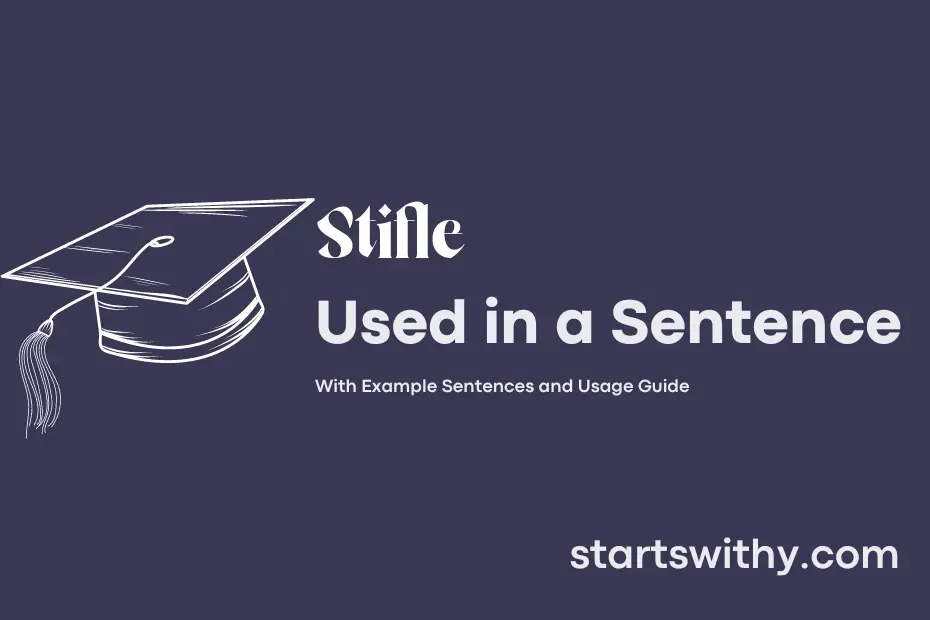Have you ever felt like your voice was being silenced or restricted? When you stifle something, you’re essentially putting a lid on it, preventing it from fully expressing itself.
To stifle means to suppress, restrain, or inhibit something. It can be used in various contexts, from stifling a yawn in a quiet setting to stifling creativity in a restrictive environment.
7 Examples Of Stifle Used In a Sentence For Kids
- Stifle your laughter so your friends can concentrate.
- When you feel sad, don’t stifle your tears, it’s okay to cry.
- Please don’t stifle your creativity, let your imagination run wild!
- It’s important to not stifle others when they are speaking.
- If you need to sneeze, don’t stifle it, let it out.
- Remember to not stifle your curiosity, ask questions and learn new things.
- Don’t stifle your dreams, reach for the stars!
14 Sentences with Stifle Examples
- Stifle the urge to procrastinate and start working on your assignments early.
- It’s important to stifle distractions while studying for exams.
- Don’t let self-doubt stifle your creativity when working on projects.
- Make sure to stifle any feelings of negativity that may affect your mental health.
- Learn to stifle your frustration when dealing with challenging professors or group members.
- Stifle the temptation to oversleep and miss your morning lectures.
- Practice mindfulness to stifle anxious thoughts before exams or presentations.
- Remember to stifle unhealthy habits that may hinder your academic performance.
- Surround yourself with positive influences that can help stifle feelings of self-doubt.
- Develop time management skills to stifle last-minute panic before deadlines.
- Don’t let peer pressure stifle your personal growth and individuality.
- Join study groups to help stifle feelings of isolation during exam season.
- Seek mentorship or counseling if you feel overwhelmed and unable to stifle your stress.
- Set boundaries to stifle unhealthy relationships or situations that may impact your academic success.
How To Use Stifle in Sentences?
Using Stifle in a sentence is a powerful way to convey the act of suppressing or holding back. To use Stifle correctly, simply place it where you need to express the idea of hindering or restraining something. For example:
- “She tried to stifle her laughter during the serious meeting.”
- “The strict rules seemed to stifle creativity in the workplace.”
To ensure that you are using Stifle correctly, consider the context of the situation. Stifle is typically used in situations where something is being suppressed, inhibited, or held back. It can refer to emotions, creativity, growth, or any form of limitation.
When constructing a sentence with Stifle, remember to pay attention to the subject and the verb that come before and after it. The subject should be the one performing the action of stifling while the object should be the one being stifled. This will help you create clear and concise sentences that effectively convey your message.
By practicing and incorporating Stifle into your vocabulary, you will be able to communicate more precisely and vividly. Remember, the key to mastering any new word is to practice using it in various contexts to gain a deeper understanding of its meaning and usage.
Conclusion
In conclusion, the various sentences provided demonstrate how the word “stifle” can be used in different contexts to convey the idea of suppressing or inhibiting something. Whether it is stifling a yawn, stifling creativity, or stifling free speech, the word captures the notion of holding back or restraining.
Overall, “stifle” is a versatile word that can be applied to a range of situations where there is an element of restriction or hindrance. Understanding how to use this word effectively can help convey a sense of limitation or constraint in various forms of communication.



